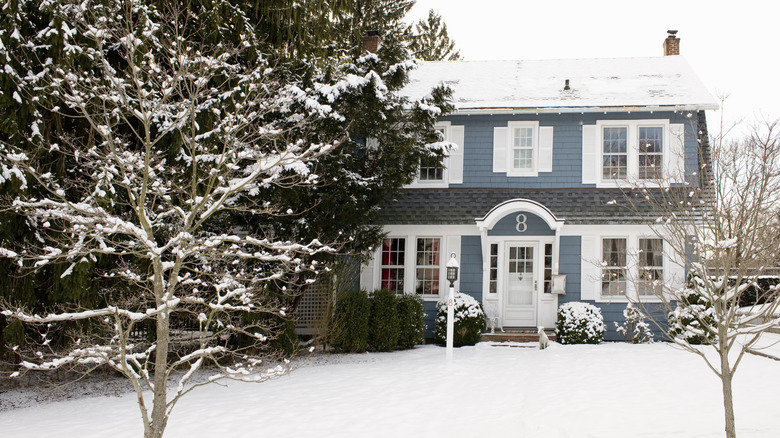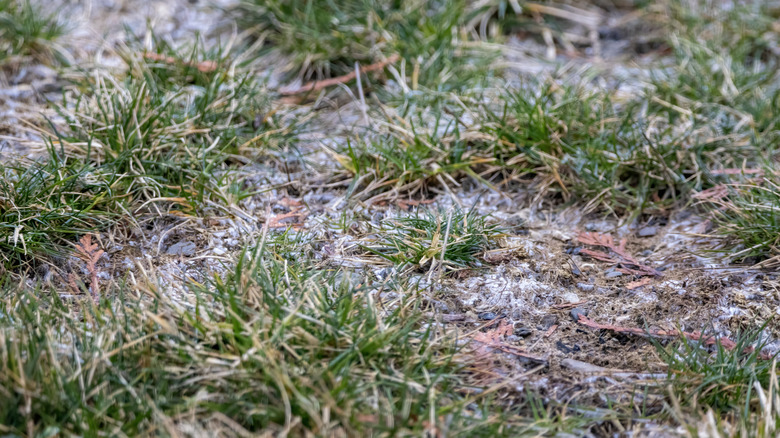Habits That Will Help Prevent Lawn Damage From Snow
We may receive a commission on purchases made from links.
Winter's snow can certainly create a lovely landscape, but underneath that winter quilt, your lawn may be fighting a difficult battle. Grass enters dormancy through winter but is still susceptible to damage from heavy snow, ice, and cold-weather practices. Eventually, soil can become compacted, grass can suffocate, and chemicals can damage your lawn, leaving it patchy and unhealthy when spring comes. There are both benefits and downsides to snow on your lawn, and preventing snow-related damage isn't just about what you do during winter. Protecting your lawn begins with proactive habits before the first frost and continues with mindful choices throughout the colder months.
Preparation is the key when it comes to protecting your lawn. Late-season maintenance, like mowing to the appropriate height and aerating the soil, sets the stage for a strong lawn. Maintaining the health of that grass up until it bides its time for the winter allows it to better withstand the coming months. Clearing away heavy outdoor objects, such as furniture and debris, prevents snow from pressing them into the grass, which creates unsightly dead patches. This mix of preparation and continuing care can make all the difference when spring comes and the snow finally melts. In the next section, we'll explore practical winter-specific strategies to further protect your lawn and ensure it thrives in spring.
Practical winter strategies to protect your lawn
Once the snow begins to fall, how you handle it can have lasting effects on your lawn. While a covering of snow on your grass can protect it from excessive freezing, don't leave big piles of snow on the grass. While it may seem a convenient option, these piles create an excessive weight that compacts the soil, suffocating the roots and hindering their access to nutrients. Distributing snow evenly or directing it toward hardscaped areas can reduce this risk.
It's also essential to use ice melt products correctly. The downside of using too much deicing salt or chemical deicers is that they leach into your lawn, altering its pH balance and causing damage to the grass. Additionally, traditional rock salt often used for snow removal can burn the grass underneath the snow. One of the foolproof ways to protect your garden from deadly winter salt damage is to opt for eco-friendly, pet-safe alternatives, like calcium magnesium acetate found in Snow Joe Ice & Snow Melt, that are less harmful to your yard and nearby plants.
One crucial aspect is limiting foot traffic on snow-covered grass. Walking on snow moves it around, compressing it to the ground and further increasing the damage to dormant grass. As much as possible, encourage family members to walk on designated walkways or alternate paths in order to reduce lawn foot traffic.

